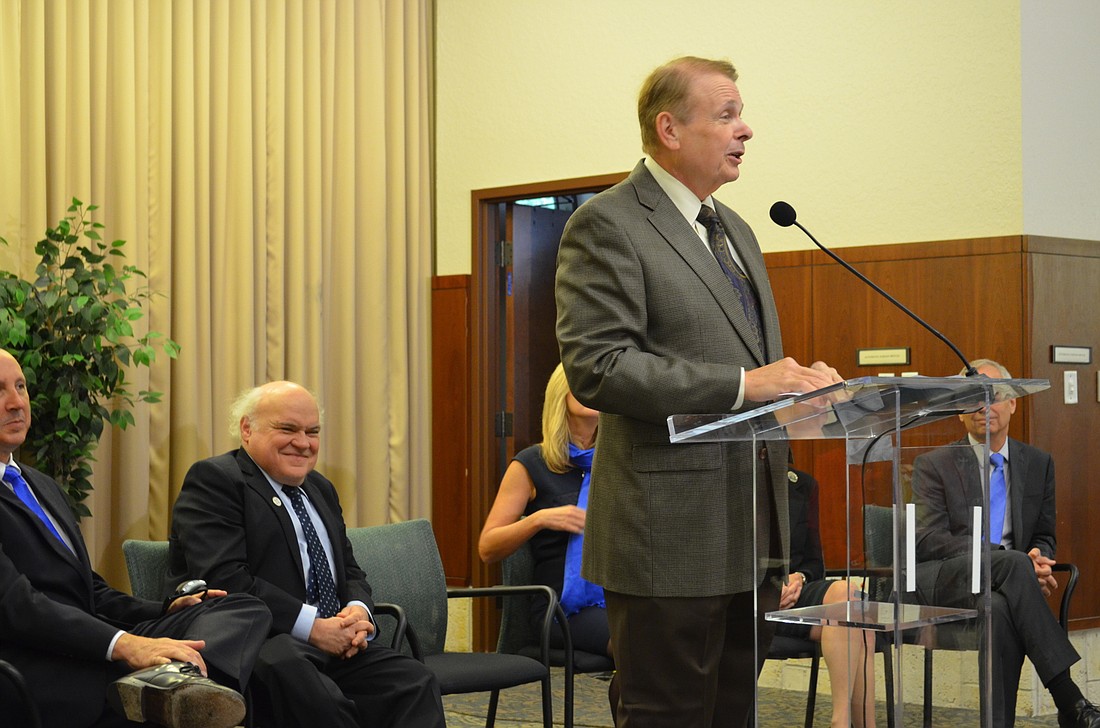- December 27, 2024
-
-
Loading

Loading

A new collaborative effort between Sarasota-Manatee colleges could have its biggest impact on Sarasota’s North Trail, where three schools are separated by less than three miles along U.S. 41.
The idea of branding this corridor as a haven for higher education isn’t new. College officials, residents and other property owners have long pointed to New College of Florida, Ringling College of Art and Design and University of South Florida Sarasota-Manatee as a bright spot in an area in need of revitalization.
Similar campaigns have fizzled out in the past. Most recently, a 2006 conceptual planning effort called “Innovation 41” brought together those colleges and government officials. The final report laid out a branding strategy for the North Trail, outlining key initiatives to help spur redevelopment.
College leaders failed to locate funding sources to help achieve that vision. When the recession hit, the plans were shelved for good, with each school focused on its own individual priorities.
“What tends to happen is, we’re college presidents — we’re doing a lot of other things,” said Ringling College President Larry Thompson. “It starts to slip.”
Study Buddies
Today, there’s hope the latest push will have lasting success. With the exception of Ringling, new leadership is in place at each local college. In the past few years, Thompson said, this helped change the conversation when the presidents would meet with one another.
Instead of lamenting the failure of earlier efforts, the group was focused on finding new opportunities for synergy.
“Everyone was anxious to see if we could reimagine this,” Thompson said.
Out of those meetings, the schools decided to create a partnership called the Consortium of Colleges on the Creative Coast, or C4 for short. The six member institutions want to spread the message that, taken together, the Gulf Coast can become a college town in its own right.
On Jan. 5, three community foundations announced a $75,000 contribution toward C4. The partnership used that money to hire former USF Sarasota-Manatee CEO Laurey Stryker to spearhead future joint initiatives. In addition to the branding effort, Stryker wants to expand a program that allows students at member colleges to enroll in courses at other member colleges.
Although C4 began two years ago, college leaders said bringing Stryker on board is a critical move for the partnership’s future success. Mark Pritchett is the CEO of the Gulf Coast Community Foundation, which helped set up C4 and contributed a third of last week’s $75,000 gift. He said having a leader focused on collaboration would prevent the initiative from falling off the radar.
“The (donation) is really to pay for Laurey to ride hard on these college presidents,” Pritchett said. “Laurey gets it — she knows what the job of a university president is, and she’s going to help ensure they stay on track for the things they can do.”
Off Campus
Even with a renewed vigor for working together, Thompson said creating a harmonious college atmosphere on the North Trail would be hard. On and off the Ringling campus, he said, there’s a tendency to look at the other colleges as distinct entities.
“People look at these institutions as being very apart — Ringling is one organization, and New College is another organization,” Thompson said. “It’s just not natural instinct to look at it holistically when they’re governed in a variety of ways. We’re trying to change that paradigm.”
The group’s focus is somewhat limited for now, but Thompson said the goal is to consider a broad swath of joint endeavors over the long term. In addition to academic efforts, he mentioned shared residence halls or a student center as possible infrastructure projects that multiple colleges could use.
“The imagination is unlimited about what could happen,” he said.
David Morriss, a board member for the North Trail Redevelopment Partnership, said C4 is an exciting development for the future of the area — but he admits he hasn’t heard much directly from college officials lately. With the city developing a new zoning code, he said there’s an opportunity now to have a larger community discussion of what the future of the North Trail should look like.
“There are a lot of question marks about that we don’t have answers to,” Morriss said. “Those kinds of conversations need to occur in one big mass.”
The partnership hopes to have other positive impacts on the broader community. C4 leaders said the initiative has garnered interest from economic development groups. If Sarasota establishes a reputation as a hub for education, it could help address a long-bemoaned brain drain issue.
“The economic development corporations see the value in this as a recruiting tool,” Pritchett said. “It might help us do a better job retaining young people — we export a lot of talent out of this region.”
In the coming months, Stryker and member institutions will continue to search for opportunities for local colleges to work together. C4 leaders believe the pieces are already in place to create a strong identity as a college town, both on the North Trail and in the region in general. Now, it’s just a matter of connecting them.
“The shared commitment, I think, is very strong,” Stryker said. “That’s really the big story we were talking about last week — three foundations and six institutions coming together for this. That’s pretty special.”